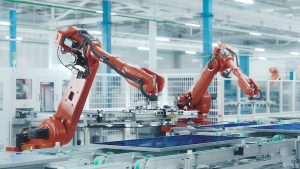 Most processes in industrial plants depend on electric motors. Conveyor belts, pumps, compressors, agitators, fans – all of these need reliable motors and motor control. And around 85 percent* of these motors are asynchronous, due to their low cost, robustness, and ease of installation and maintenance.
Most processes in industrial plants depend on electric motors. Conveyor belts, pumps, compressors, agitators, fans – all of these need reliable motors and motor control. And around 85 percent* of these motors are asynchronous, due to their low cost, robustness, and ease of installation and maintenance.
As you’d expect given the popularity of asynchronous motors, there’s a wide variety of protection, control, and management solutions available. This causes two issues:
- Quick configuration of the right motor control solution in terms of cost, function scope, compliance, and other aspects becomes challenging. As motor control doesn’t have a huge impact on competitiveness in the machine-building world, particularly for simple machines, spending lots of time to configure it is counterproductive.
- The breadth of solutions available can obscure trends in tailored solution design. Trends such as the move from motor control to motor management, the use of more electronic-based components, the flexibility of multi-functional products, and modularity design for multiple applications.
Digitization is reshaping motor control
All of those trends are shaping machine design today. But their influence pales in comparison to digitization, which is truly shaping the future of the market.
Smart technologies are gaining popularity across the industry, but motor control and protection lag behind. For solutions with direct online starters, there’s rarely any health/diagnostic data available on asynchronous motors to help integrate them into asset management tools. Such data is typically found in solutions with soft starters or variable speed drives with fieldbus connectivity.
What this means is that there’s vast potential in digitizing motor control and protection. Even if customers aren’t yet clamoring for it, the topic is quickly gaining importance.
For good reason. Digital technologies bring unprecedented visibility and reactivity to asset management, both remotely and on site. Which is why any automation solutions designed today should be prepared for future integration with new asset management strategies. In other words, the minimum health data for asynchronous motors should be available without the need to rework the entire motor control solution.
Holistic motor management
To make motor control adaptations and upgrades easier, as an industry leader in motor control solutions for nearly a century, we have developed a complete approach to motor management. This design philosophy encompasses a scalable offer for motor protection and control, for all stages of machine complexity. A selection of free digital design tools helps machine builders define complete solutions tailored to their applications and save time at every stage of the design process.
Integrating motor control into digital ecosystems
With a new modular digital load management system, we are paving the way to make motor control based on direct online starters an integral part of fully digitized machines. The digital load management system provides the right level of connectivity for transferring cyclic data from each motor to the edge control level, creating a basis for analytics and health monitoring.
Once this data is pulled into a digital ecosystem, its true value becomes clear: providing an IIoT-enabled architecture and platform, which integrate maintenance-related intelligent field devices and edge control with apps, analytics, and services within a cybersecure envelope. The collected data at the machine level can be made available in the cloud, what allows both OEM and end user staff to leverage the data to make better decisions. And now, thanks to new digital motor control solutions, data from asynchronous motors and loads can be properly incorporated into modern asset management strategies.
Going digital with asynchronous motors
A newly published e-guide, “Efficient motor control solutions for smarter machines,” makes it easier for machine builders to take advantage of the latest motor control and protection solutions. It outlines three typical machine application scenarios and helps simplify the choice of the asynchronous motors protection and control technology by looking at it in terms of cost, functionality, modularity, and digitization.
Design and configure optimum motor control solutions with greater ease, download the free e-guide.
*TU Bergakademie Freiberg Institut für Elektrotechnik, Asynchronmotor – Stationäres Betriebsverhalten, Skriptum für Nichtelektrotechniker, 2005


